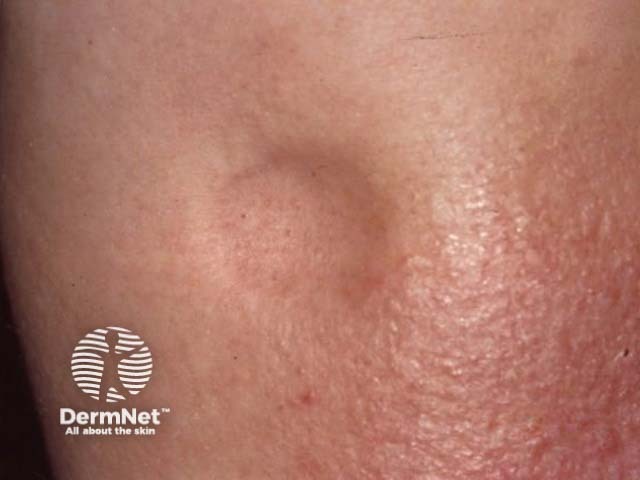Main menu
Common skin conditions

NEWS
Join DermNet PRO
Read more
Quick links
Author: Dr Jenny Chung, Dermatology Registrar, Auckland District Health Board, Auckland, New Zealand. DermNet Editor in Chief: Adjunct A/Prof Amanda Oakley, Dermatologist, Hamilton, New Zealand. Copy edited by Gus Mitchell. July 2020.
Introduction Demographics Causes Clinical features Complications Diagnosis Differential diagnoses Treatment and outcome
Submit your photo of remitting seronegative symmetrical synovitis with pitting oedema
Remitting seronegative symmetrical synovitis with pitting oedema/edema (RS3PE) is an uncommon rheumatic disease. It is also referred to as puffy oedematous hand syndrome and distal extremity swelling with pitting oedema.


The typical patient diagnosed with RS3PE is an older man in his 70s or 80s. Most reported cases have been over 50 years of age, with a male to female predominance of 2:1.
There is a well-recognised association with haematological malignancies such as chronic lymphoid leukaemia and non-Hodgkin lymphoma, and many solid tumours.
Although the cause of RS3PE is unknown, the following may contribute to the disease:
The distinguishing feature of RS3PE is pitting oedema unresponsive to diuretics.
Joints related to the oedema are painful with a reduced range of movement due to tenosynovitis. The skin may feel warm over the involved joints.
A recurring evening fever has been documented.
The complications of RS3PE relate to pitting oedema, and can include:
Diagnosis of RS3PE is largely clinical. Diagnostic criteria have been proposed:
Investigations may include:
As up to 50% of patients with RS3SE have been reported to have an underlying malignancy, age-appropriate screening should be considered.
Other conditions that may present with rapid peripheral oedema and symmetrical synovitis include the following:
The treatment for RS3PE is oral steroids with a typical starting dose of 10–20 mg of prednisone per day with a rapid response within days.
Prognosis is reported to be good, although many patients are still requiring low-dose oral steroids and/or disease-modifying anti-rheumatic drugs such as methotrexate a year or more after diagnosis.
Treatment of an associated malignancy has been reported to result in resolution of the RS3PE signs and symptoms.